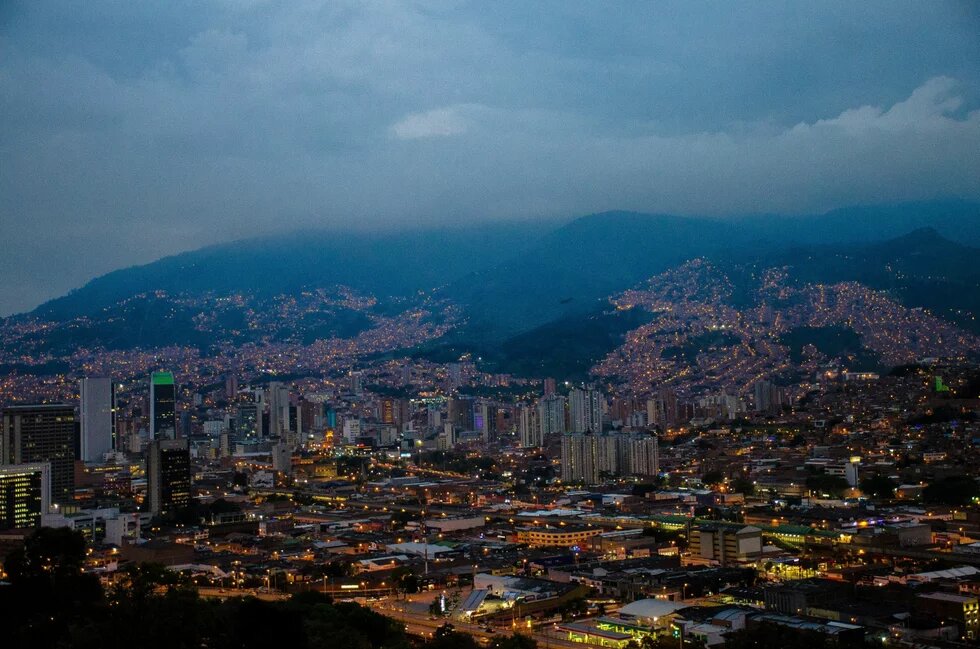Climate finance and green investments will achieve little in debt-strapped economies unless such measures are tied to systemic reform. Latin American and Caribbean countries do not need incremental pledges; they need an overhaul of global financial governance.

MADRID – Earlier this year, the International Monetary Fund declared that “debt levels have stabilized and are projected to remain stable or slightly decline” in emerging markets and developing economies. But this sanguine assessment certainly does not apply to Latin America and the Caribbean (LAC), where mounting debt burdens, climate vulnerability, and stalled progress toward development goals are fueling a full-blown crisis. Treating debt as “stable” while ignoring climate risks and development needs is dangerously shortsighted.
Across the continent, public external debt has surpassed 1 trillion US dollars, with average gross debt near 70 percent of GDP – and above 100 percent for several small island developing states (SIDS) in the Caribbean. Debt-service costs have soared as rising interest rates and currency depreciations have made foreign-denominated repayments more expensive. As a result, large debt burdens are fiscally suffocating the region, with eight LAC countries spending more on debt service than on public health between 2021 and 2023.
Climate Risks Are Driving the Debt Crisis
Worse, LAC is one of the most climate-vulnerable regions in the world. Hurricanes, droughts, and floods have already cost more than 110 billion US dollars since 2000. In Dominica, Hurricane Maria caused damage equivalent to 226 percent of GDP in 2017, while Hurricane Ivan cost Grenada 200 percent of GDP in 2004. The climate crisis has cost Caribbean countries an average of 2.13 percent of GDP annually from 1980 to 2020, according to the OECD. Each disaster forces governments to borrow more for reconstruction, compounding already unsustainable debt. The result is a vicious cycle whereby disasters increase debt, which constrains investment in more resilient infrastructure, magnifying the cost of the next disaster.
The urgency of this mounting crisis is especially obvious for many SIDS. Despite contributing less than 1 percent of global emissions, they are disproportionately punished by climate change. They have narrow economic bases, high dependence on tourism and fisheries, and limited fiscal buffers. The outcome of this year’s UN Financing for Development Conference (FfD4) recognized these challenges by pushing for a SIDS Debt Sustainability Support Service (a welcome step advocated by the Alliance of Small Island States). Yet the DSSS remains little more than an aspiration. Without swift operationalization and significant resources, it will not provide the lifeline these countries need.
To its credit, the region has pioneered its own innovative responses to this debt-climate crisis. For example, Belize’s 2021 “blue bond” debt-for-nature swap cut debt by 12 percent of GDP and financed long-term marine conservation efforts, and Barbados, Ecuador, and the Bahamas have followed with their own swap deals. Grenada and Barbados have also issued bonds with “disaster clauses” that suspend repayments after major shocks. But as promising as these innovations are, they are no substitute for systemic reform. Swaps remain complex and costly, with high administrative expenses and lingering concerns about the sovereignty of domestic environmental assets. Disaster clauses are still rare and relatively untested.
Climate Finance and Green Investments Must Be Tied to Systemic Reform
What we really need is a new framework with two complementary components. For distressed economies, deep and comprehensive restructuring is essential, as is participation by all creditors – bilateral, multilateral, and private – under an enforceable comparability-of-treatment regime. Debt relief must be paired with concessional finance to support green infrastructure, social protection, and climate adaptation. Beneficiary countries, in turn, should commit to transparent debt management and the publication of investment plans aligned with climate resilience and the Sustainable Development Goals.
For solvent but liquidity-constrained countries, the focus should be on lowering borrowing costs and widening fiscal space. This requires expanded concessional lending from multilateral development banks, targeted reallocations of special drawing rights (the IMF’s reserve asset), and broader adoption of climate-responsive instruments such as swaps, climate-linked bonds, and disaster clauses.
But political leadership is needed to implement these technical fixes. To that end, this week’s IMF-World Bank Annual Meetings offer a chance to reset the narrative by acknowledging that there is a debt crisis, and that ignoring it will only deepen instability. The EU-Community of Latin American and Caribbean States (CELAC) summit in November will then provide a platform for concrete commitments, since it is focused on climate change, the green transition, and investments in both regions.
Europe must act
In that discussion, Europe must overcome the complacency that we have seen from the Bretton Woods institutions and the G20. Climate finance and green investments will achieve little in debt-strapped economies unless such measures are tied to systemic reform. LAC does not need incremental pledges; it needs Europe’s political and financial backing to build a climate-aligned debt-sustainability framework, roll out the SIDS Debt Sustainability Support Service, and push through urgent improvements to the G20 Common Framework – including faster processes, full creditor participation, and enforceable comparability of treatment.
Enhancing dialogue and fostering joint action between the EU and LAC on debt and climate finance could be an important step toward more effective global financial governance. Without decisive action, many LAC countries risk another lost decade, marked by repeated crises, a lack of fiscal space, and further erosion of development gains. Unless policymakers confront this reality and act accordingly, stability will remain a mirage, and the costs will be borne by those least responsible for the crisis. With systemic changes, however, the region can build resilience, foster inclusive growth, and realign debt management with climate and development imperatives.
This article first appeared on Project Syndicate.


